Last week, I made a batch of agnolotti/ravioli containing a very simple summer filling of nice, dry ricotta: blanched and mashed peas; and fresh mint. Salt, no pepper. It is a filling worth trying as pea season comes to an end. (It would be very good with fava/broad beans too, but that would be quite a bit more work because of the indispensable extra step of peeling the blanched beans.)
The question arose of how to dress these ravioli (which I won’t describe in detail, because their ingredients tell the whole story: for the filling combine ricotta, peas, mint and salt). The first thought was a standard one: Butter and mint, maybe with some parmesan at the table. But there was a lot of mint in the filling, and more would have been too much. It is no secret that one of the first pea dishes Jackie and I eat each summer is peas à la française, one of whose defining ingredients is little springtime onions. So, for us, peas find a good friend in any member of the onion family. Leeks, for instance: new-season leeks had just begun to appear at the market, and I had some in the house.
And echoing the peas in the ravioli with peas in their dressing seemed to be a fine idea: there would be a textural contrast with the crushed peas in the pasta filling; they would taste good; and they would look gorgeous with the pale green-white of the leeks and the yellow of the pasta.
Early in the day I shelled enough peas (the smaller and younger the better) to yield a generous half cup (around 120 ml by volume). If these had been older and bigger, I’d have blanched them for a minute or two in boiling water, then chilled them in cold water and set them aside.
A half hour before guests arrived, I cut the white part (just extending into the light green) of five thin, well-washed leeks into 1/4 to 3/8-inch (6 to 10-mm) rounds; these were short, and the white part measured only 3 to 4 inches (7.5 to 10 cm) in length, so adjust quantities accordingly. Cut thicker ones on the smaller side for the sake of even cooking. In a pan large enough to eventually hold the 28 ravioli (they were small, and seven to a portion was a nice first course), I melted about a tablespoon and a half (20 g) butter and added the leeks still damp from rinsing, along with salt. Over low heat and with the pan partially covered, I cooked them until they were just tender, adding dribbles of water as needed, then set them aside.
When the ravioli went into their boiling water, I reheated the leeks and added the peas, which were tender in about 90 seconds, then turned off the heat and waited for the ravioli. When they were done, I relit the fire under the leek-pea mixture and drained and added the ravioli. I splashed in a little of the pasta-cooking water to generate a glossy butter finish, adjusted the salt, and that was that. No cheese was needed.
It was a perfect companion to the pea-based ravioli, but you could serve it with any small-format egg pasta, such as farfalle – or indeed with spaetzle. Very delicate, very elegant, very summery. And delicious.

Peas and the summer’s first leeks with ricotta-pea-mint agnolotti/ravioli
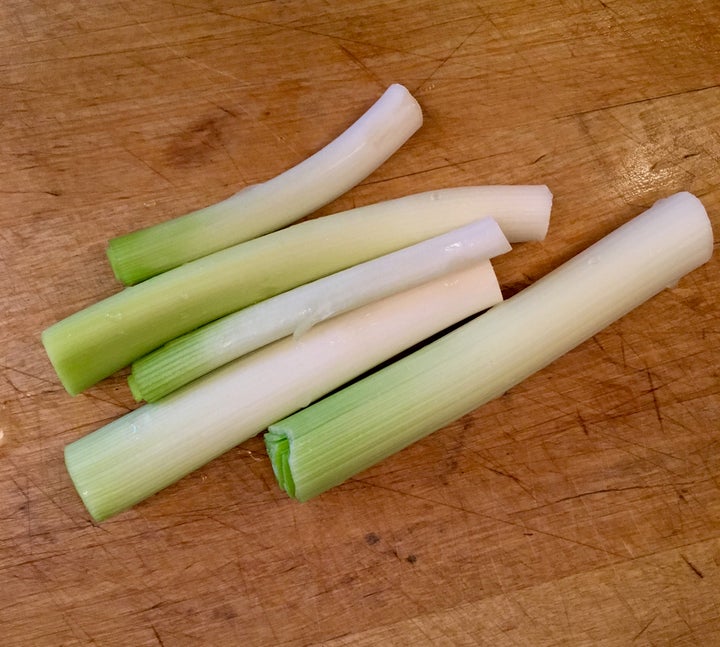
Use only the white and palest green parts of (preferably) small leeks
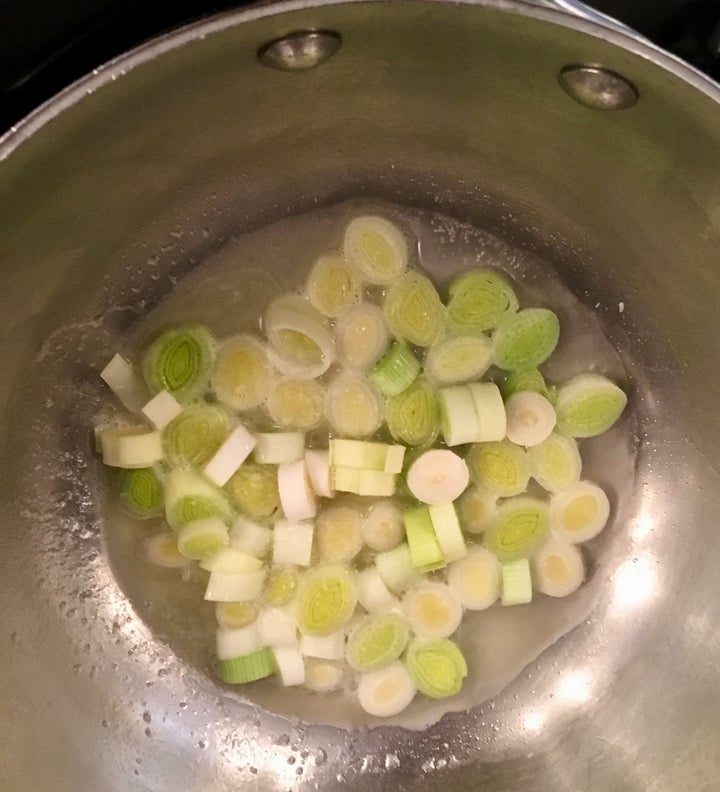
In butter and a little water, the sliced leeks take next to no time to cook
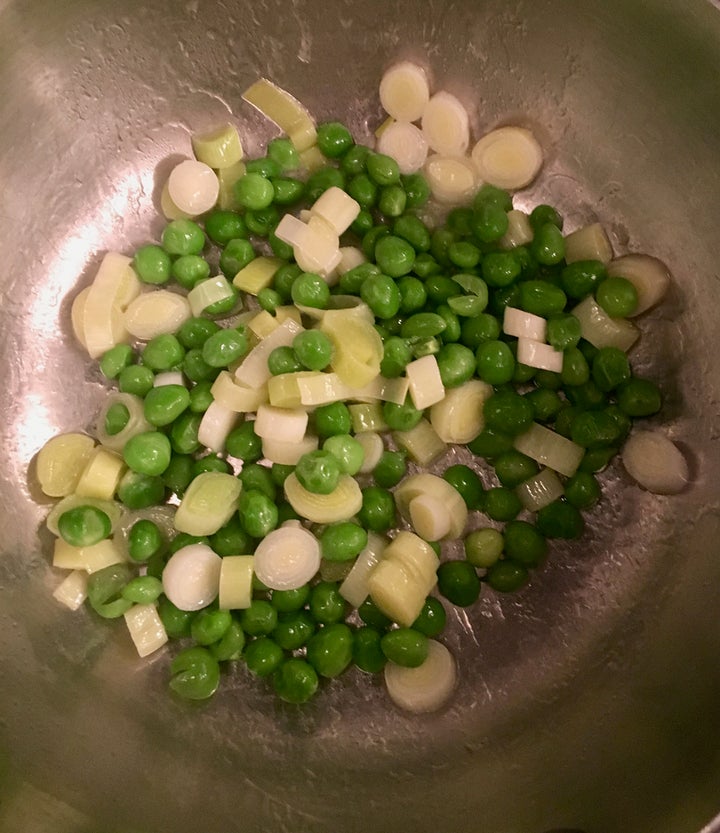
And, once added, the peas cook in even less time
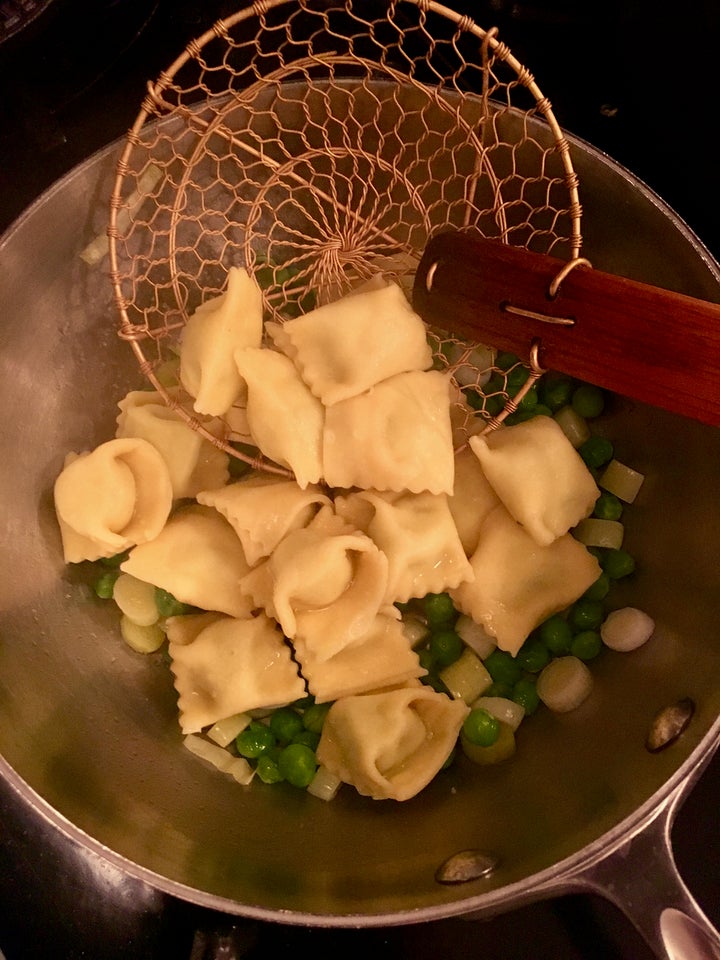
Ravioli going into the pan
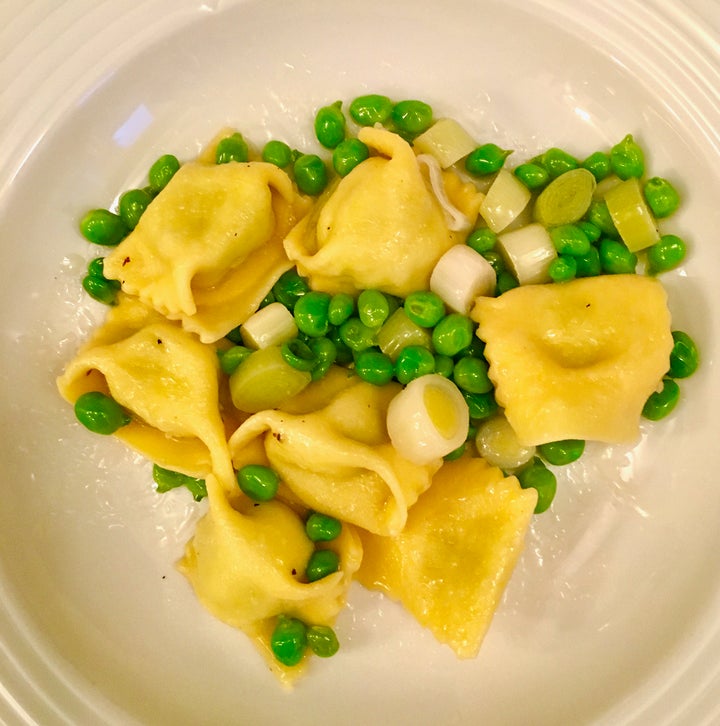
The finished dish